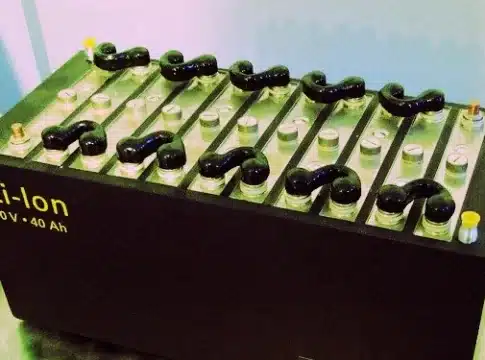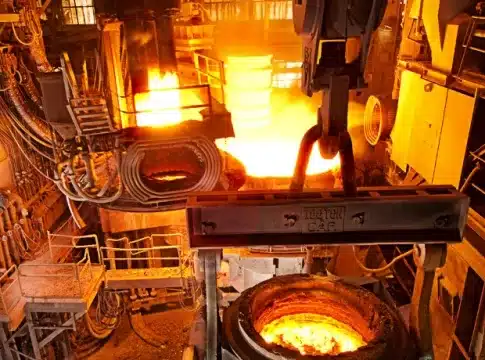Lithium Prices and The Insights into the EV Market’s Pulse
As the electric vehicle (EV) market evolves, understanding the dynamics of lithium becomes important. With shifting consumer preferences, changing regulations, and fluctuating prices, this article highlights the trends and targets significantly impacting the industry.
The EV Landscape: PHEVs, BEVs, and Regulatory Adjustments
Plug-in electric vehicles (PEVs) are vehicles that use rechargeable batteries as their primary source of power and can be charged by plugging into an electrical outlet or charging station. PEVs offer reduced emissions compared to traditional internal combustion engine (ICE) vehicles and can contribute to lowering dependence on fossil fuels.
PEVs include both plug-in hybrid electric vehicles (PHEVs) and battery electric vehicles (BEVs), as both types are rechargeable using external electricity sources.
In response to slowing income growth, reduced government subsidies, and ongoing concerns about limited charging infrastructure in certain regions, consumers and automakers are increasingly turning to PHEVs as a more affordable interim solution on the path toward full electrification.
RELATED: New Monthly EV Sales Record to Kickstart 2024
In China, the share of BEVs within the PEV market decreased by 10% points to 57.0% in February compared to the same period last year. This declining trend is also evident in the United States and Germany, according to S&P Global Commodity Insights report.
Both the United States and the European Union (EU) are adjusting their PEV targets in response to industry feedback.
Chart from S&P Global Commodity Insights
The Biden administration’s final tailpipe rule, which sets ambitious targets for BEV penetration, has been revised lower compared to the initial proposal. The finalized rule places greater emphasis on the role of PHEVs, aiming for BEVs to represent 56% of new car sales by 2032. PHEVs account for a 13% share, resulting in a total PEV share of 69%.
Similarly, the EU is undergoing the legislative process to enact its Euro 7 vehicle emissions rule. Following resistance from automakers and member states, the EU has adjusted its approach to BEV adoption in the short term. Still, the bloc continues to push for its long-term goal of phasing out new ICE vehicles by 2035.
Since 2014 until 2023, BEVs got the most sales globally as per EV Volumes tracking report, as illustrated below.
As subsidies for PEVs diminish, the momentum of PEV sales will depend on factors such as consumer income, vehicle pricing, model selection, performance, and regulatory pressures on emissions reduction from manufacturers.
Looser emissions standards may slow the adoption of BEVs in favor of PHEVs, which utilize smaller batteries and fewer metals.
Lithium: Gearing Up the World of EVs
What powers each of these electric vehicles is a critical mineral they call the “white gold” or lithium. It’s one of the key materials used to make batteries for EVs.
RELATED: Lithium: The White Gold Powering up the EV Revolution
Per S&P Global report, lithium prices experienced a slight increase in March. This is driven by various factors including production cuts, auction results, and improved sentiment regarding demand for traction batteries.
Prices rose by 5.1% and 2.1%, respectively, for lithium carbonate CIF Asia and delivered duty-paid basis, during the month up to March 22.
Some lithium producers have resumed auctions to ascertain a perceived “true” price for their products. While the spodumene price has been climbing since February, it remains deep in the cost curve despite numerous production cuts.
The lithium carbonate CIF Asia price ranged between $13,500/ton and $15,000/ton up to March 21. That’s more than double the range observed from April to December 2020, which was between $6,300/ton and $7,250/ton, as shown above.
Many lithium producers have highlighted in their fourth-quarter 2023 earnings calls the challenge of accurately forecasting the price they will receive for their lithium products. The world’s largest lithium producer, Albemarle, shifted its investment strategy in response to evolving market conditions.
READ MORE: Albemarle Shifts Focus in Lithium Strategy Amid Market Softening
Notably, lithium auction price suggests that lithium prices are expected to rise by the end of the year. Albemarle is planning a series of upcoming auctions, starting with 10,000 metric tons of spodumene.
Lithium prices have stabilized since the beginning of 2024 and are now higher than the bottom of the previous cycle. This reflects the current higher cost structure.
What Lies Ahead for Lithium?
Lithium prices have fallen to levels not seen in over 2 years. While supply cuts suggest an upward trajectory for prices, the extent of the price recovery has been relatively modest thus far, particularly for lithium, despite recent production cuts.
RELATED: Lithium Producers Adapt to Price Plummet, Cut Costs and Delay Investments
Prices in April may receive further support if stronger March sales and traction battery production data confirm optimistic demand trends.
Investors continue to show interest in lithium projects, despite short-term challenges, recognizing the long-term potential they offer.
On average, it takes almost 17 years for lithium projects to progress from discovery to commissioning, based on recent updates on mine lead times. This underscores the long-term perspective required for investors in the lithium sector, despite short-term fluctuations in prices and demand.
At the back of all these, the current low-price environment allows for a focus on efficiency and the elimination of high-cost production. Positioning the market for an eventual increase in demand and prices.
The post Lithium Prices and The Insights into the EV Market’s Pulse appeared first on Carbon Credits.



